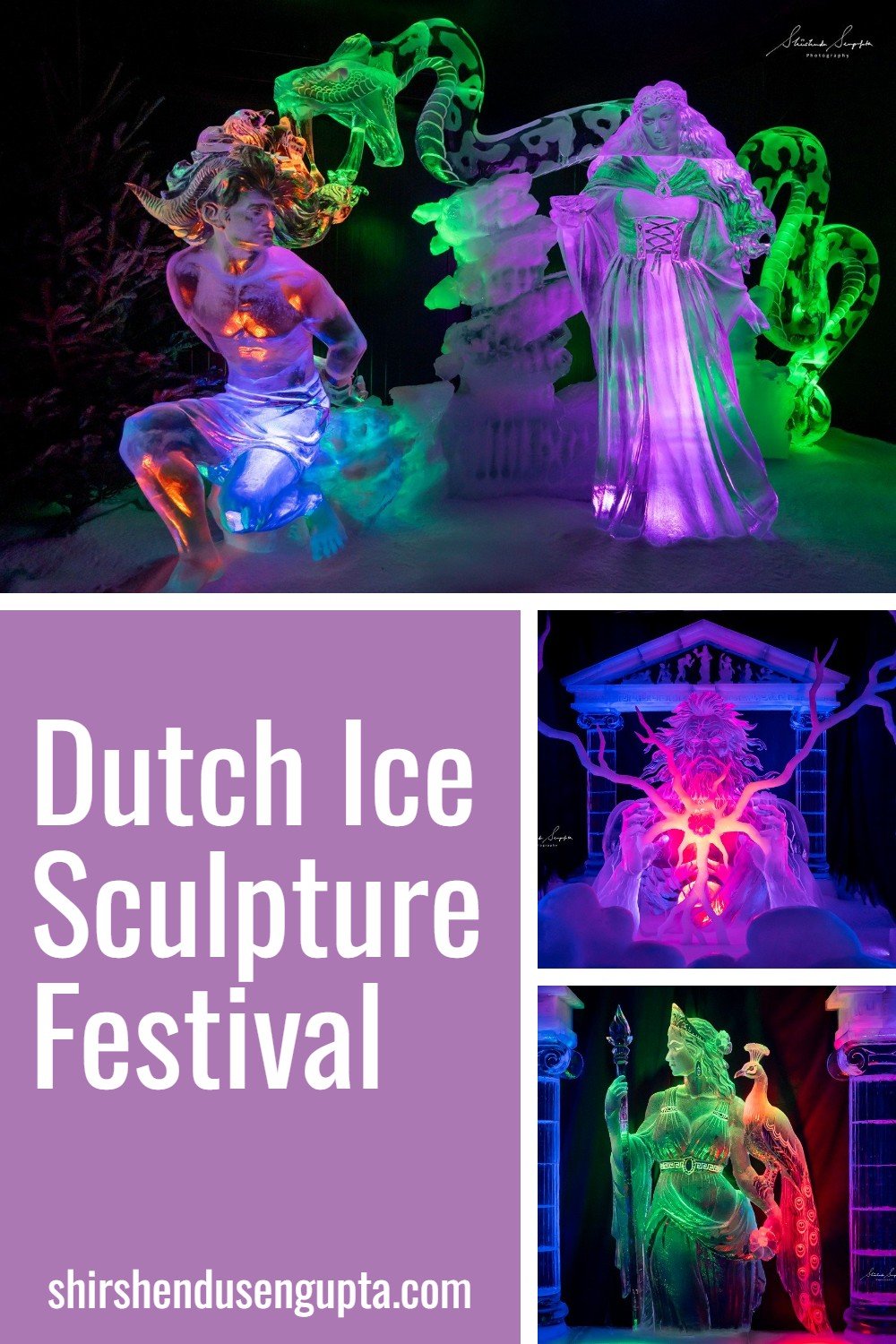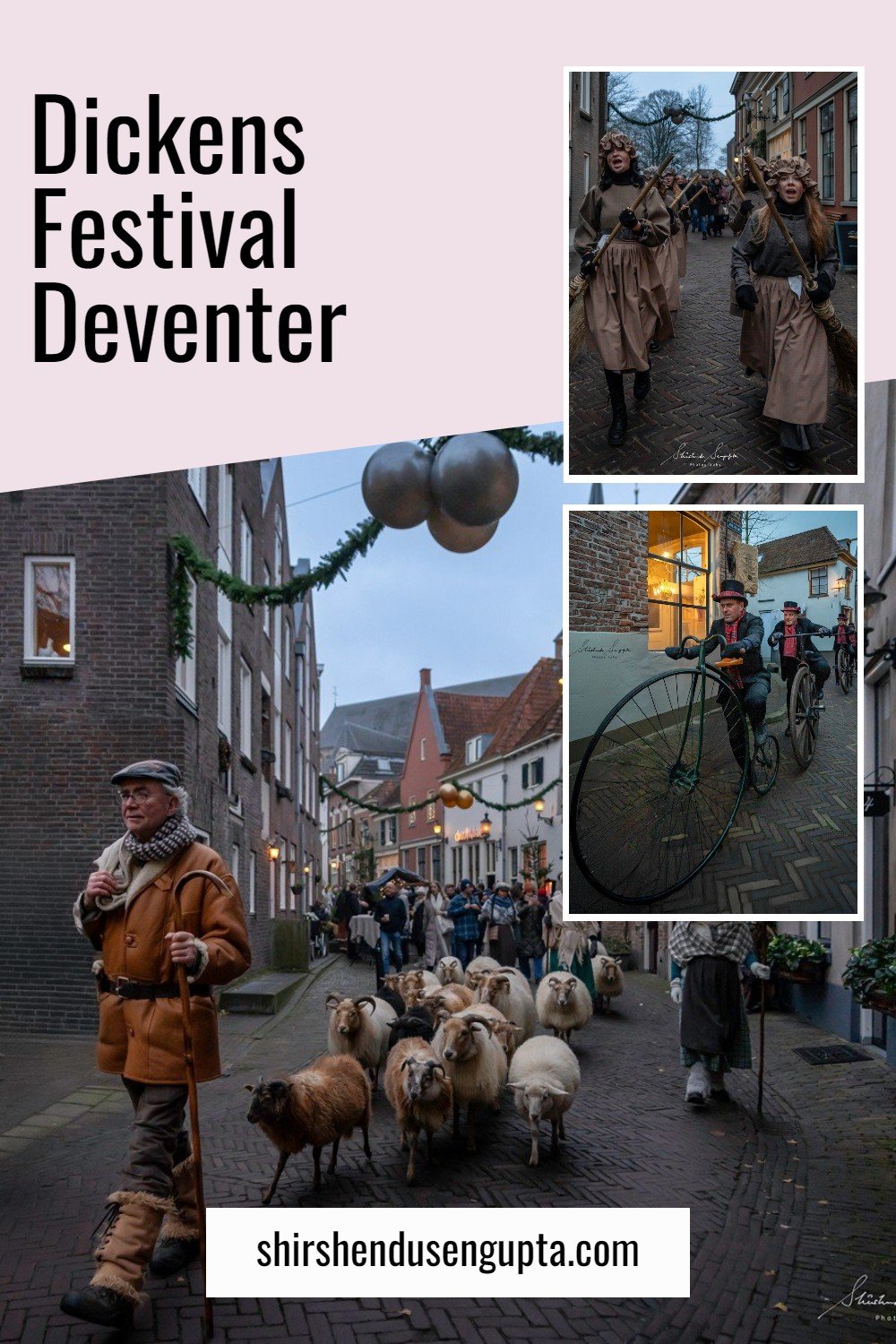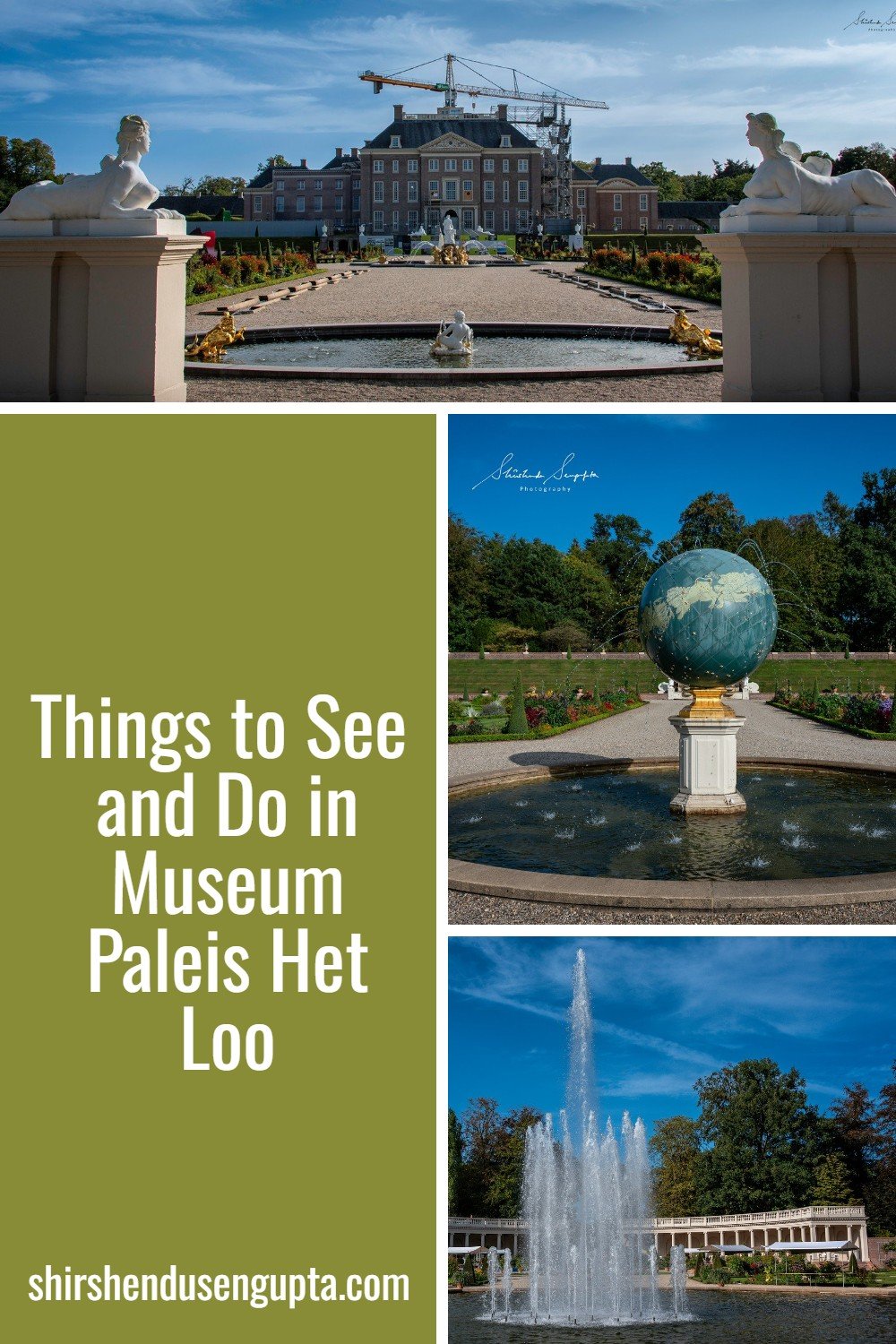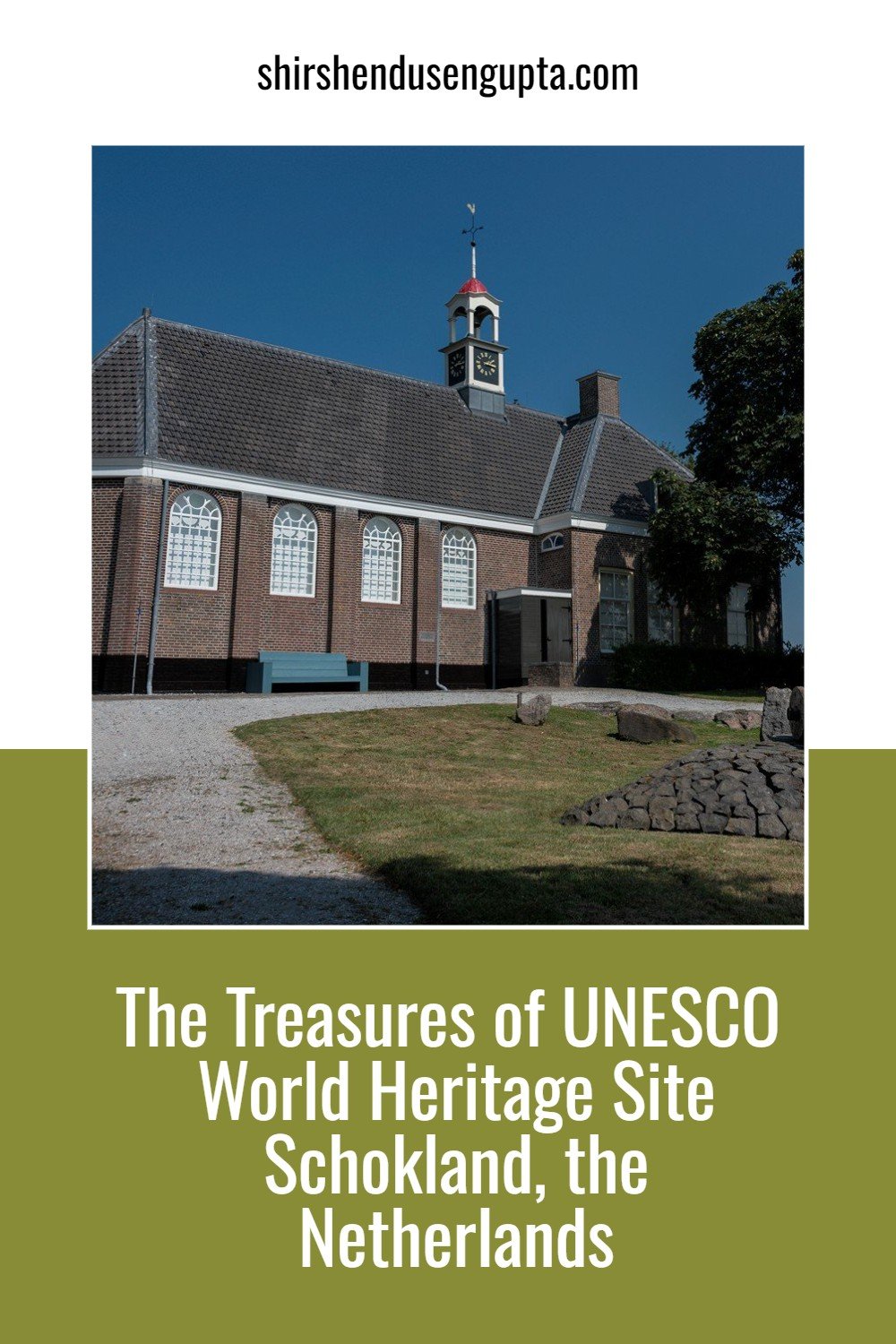Experience Waterland | 11 Most Charming and Beautiful Authentic Dutch Villages of Waterland | The Wet Back Garden of Amsterdam, the Netherlands
Welcome to Waterland
Waterland is the lush countryside immediately north of Amsterdam. Also known as "Amsterdam's wet back garden," with thousands of little canals, brooks, rivers, and lakes, this landscape is both land and water, as its name implies. This rural area boasts scenery that is genuinely representative of the Dutch landscape: flat, abundant with historic "polders" (reclaimed land tracts), lush green pastures, twisting dikes, and functional windmills. In a nutshell, Waterland is the Netherlands, and it's only a short distance from the hectic metropolis. Nevertheless, this area is absolutely distinct from Amsterdam. It is a place where "the clock ticks more slowly," as we like to say in the Netherlands!
11 Most Charming and Beautiful Authentic Dutch Villages of Waterland (in alphabetical order)
Some of the most picturesque villages the Netherlands has to offer, like Monnickendam, Marken, Broek in Waterland, Uitdam, and Zuiderwoude, are tucked away between the grasslands and canals of Waterland. Because of the seclusion brought about by each village's former status as an island encircled by water, each one has its unique character and history. These historic villages, which date to the Dutch Golden Age, have been meticulously conserved. The houses are made of wood and have vibrant paint jobs as the soft peat soil cannot support the weight of stone. Today, I’m going to take you along with me on a ride across the 11 most charming and beautiful authentic Dutch villages of Waterland. Let the journey begin!
1. Broek in Waterland
We start our journey with the charming village of Broek in Waterland which is only a short distance from Amsterdam. Broek, which is surrounded by water, is one of Holland's most beautiful spots, comparable to well-known Dutch "water villages" such as Giethoorn. The historic wooden houses at Broek in Waterland are the most remarkable sight. Broek in Waterland is a town with 'fifty shades of gray,' as they are painted in primer. These lovely homes have ceremonial entrances (only used for weddings and funerals), carved and colorful lintels (a technique of identifying a house before house numbers were invented), and stone tiles on the chimney (to prevent witches from flying in, true story). During spring a stroll through the neighborhood feels enchanting with flowers blooming all around, making it a walk to remember.
2. Durgerdam
Durgerdam is a classic historic "dike village" close to Amsterdam. Beautiful Durgerdam has a great view of the IJsselmeer and is perched atop a long, twisting dike. Durgerdam, like many Dutch villages, had to learn the hard way how to live with the sea and the water. During one of the biggest floods in recorded history, the St. Elisabeth Flood in the early 15th century, it was submerged and entirely wiped away. The residents then made the wise decision to construct a dike and built their homes on top of it. Currently, Durgerdam's wooden homes are situated on a curving dike.
In Durgerdam, sailing is the most popular attraction, along with other water sports. The IJmeer, a sizable body of water in the IJsselmeer lake, is located in front of the settlement. People from Amsterdam travel to Durgerdam in the summer to observe the "skûtsjes," traditional large cargo boats with flat bottoms, and enormous sails. During winter, Amsterdam residents eagerly await the IJmeer to freeze over as one of the most romantic winter activities in the Netherlands is ice skating with the lovely Durgerdam in the background.
Kapel Durgerdam (Chapel Durgerdam)
Kerk van Durgerdam (Church of Durgerdam)
3. Edam
Edam is one of Holland's oldest towns and is located near Amsterdam. Edam is known for its Edam cheese, so cheese lovers beware. It was a crossroads on international commerce routes when it was built in the Middle Ages on a strategic site between the sea and rivers. With a deep harbor and numerous shipyards, Edam swiftly grew into a formidable city. Water was very important to Edam. That is why the people of Edam have long rejected colonial intentions to reclaim fresh land and safeguard the area from flooding. During spring, the town is beautifully decorated with flowers.
To know more about the Edam Cheese Market, please read our article The Dutch Cheese Markets 2026 | The Cheese Market Cities of the Netherlands - Alkmaar, Edam, Gouda, Hoorn, and Woerden
Statues of cheese porters outside ‘De Kaaswaag’ (cheese weighing house)
4. Marken
Marken is a small fisherman’s village in North Holland, situated on the lake Markermeer. It never fails to charm the visitors with its canals, traditional colorful wooden houses, and drawbridges. At the end of the village, there’s a quaint lighthouse known as ‘Paard van Marken’ meaning ‘Horse of Marken’, accessible only on foot, about a half-hour walk over the dike. If you are in Marken, I recommend a tranquil walking experience over the dike to the lighthouse via the raw Dutch countryside leaving the hustles and bustles of the city far behind.
Marken Haven (Marken harbor)
Paard van Marken (Horse of Marken)
Breakwaters in the frozen Markermeer Lake
5. Monnickendam
Monnickendam is not a popular tourist destination despite having a rich history and a few noteworthy structures and locations. That is a result of its inaccessibility to large tour buses and lack of a railroad station. Due to this, Monnickendam is a charming and serene little town.
Monks from Friesland, in the north of The Netherlands, established Monnickendam. The Vereenigde Oostindische Compagnie (V.O.C.), the Dutch East India Company, had it as one of its founding towns. Monnickendam used to be on the coast and had easy access to the entire world in the seventeenth century. It makes sense that this town produced a large number of sea captains for the V.O.C.'s expanding military and merchant fleet.
Today, the town center comprises a historic cityscape with antique homes, churches, and stores. Monnickendam was highly reliant on fishing, much like the majority of settlements on the IJsselmeer. The fishing business suffered in the 1930s when the sea was sealed off and the Zuiderzee grew to be the largest freshwater lake in Europe. However, Monnickendam resurrected itself by creating a sizable harbor.
Museum de Speeltoren
De Waegh
Het Oude Raadhuis (Old Town Hall)
Tourist Information Center
De Grote Kerk (The Great Church)
Marina (Harbor)
6. Ransdorp
Ransdorp is a tranquil little village with farms, meadows, sheep, and cows just a short bike ride from the heart of Amsterdam. Ransdorp, however, acquired a fortune through trade and transportation in the 15th century. It was wealthy enough to support an enormous Gothic church that dominates the landscape of Waterland like a huge ship and is clearly visible from a great distance. Even shipmen on the open sea used it as a reference point since the sixteenth century. The church tower is as flat as the terrain in Waterland. That's because the builders eventually ran out of money and couldn't afford a decent church spire. You can climb the tower during the summer and be rewarded with a stunning view of Waterland.
Rembrandt, one of the Netherlands' most well-known painters, drew the church. Geertje Dircx, his second wife, was born in Ransdorp. It wasn't a joyful marriage. They frequently quarreled and threatened each other with legal action. Rembrandt was able to imprison her for a short period of time by bribing her brother.
Kerk van Ransdorp (Church of Ransdorp)
7. Uitdam
Situated on top of a dam, Uitdam is surrounded by water on all sides. It has an island feel even though it isn't an island. During the Golden Age, the village played a significant role. The illustrious sailors of the Vereenigde Oostindische Compagnie (Dutch East India Company) would frequently stop there. In front of Amsterdam's port were sandbanks, with Pampus being the most well-known. Many ships were forced to stop unloading cargo in order to wait for a higher tide. Therefore, the saying "lie in front of Pampus." The people of Uitdam came up with a way to cut down on that unnecessary time. They created enormous ship camels. Ballast water was put into these floats before they were erected on the sides of a ship. After pumping off the water, the ship was raised over the sandbank. The world still continues to use this Dutch invention. The laundry on the dike appeared to be diapers from their ships. Thus, the Uitdammers are also known as "skeetebroekers."
The storm surge of 1916, when the dike collapsed and the sea flooded Waterland, had a severe impact on Uitdam. The water came all the way to the Zaanse Schans. You won't find many big trees east of the Zaan River, because they were killed by the seawater. The catastrophe served as the Netherlands' breaking point: the Zuiderzee needed to be controlled. The Zuiderzee was thus transformed into the IJsselmeer, the biggest freshwater lake in Europe, once the Afsluitdijk was built.
Kerk Uitdam (Church of Uitdam)
8. Volendam
Volendam's name approximately translates to "full dam." It was constructed on the location of a dam in a flooded river. It was once a remote village. This catholic fishing community, which was surrounded by protestant farming settlements, stayed to itself and had its back to the water. In the 16th century, during the Eighty Years War for Independence, Volendam allied with the Catholic Spanish. People still adhere to the rituals, traditions, and dialects that they formed. When artists discovered the town in the 19th century, this solitude was broken. They adored the colorfully painted homes and ethnic attire. The fishing community's fame spread due to their photographs, and Volendam swiftly developed into a popular tourist attraction. For photos, dressing up as locals for tourists quickly became customary. Today, Volendam is one of the most popular tourist spots in the Netherlands. Two million people visit this historic fishing community every year. The historic sea dike, a lengthy stretch of colorfully painted homes with eateries, cafes, and restaurants, is Volendam's primary attraction. In the summer, this area is bustling with tourists enjoying the water. If you are in the neighborhood stop by Volendam for lunch because it's the best place to try authentic Dutch fish delicacies like raw herring with onions and pickles and fried cod fish pieces (kibbeling). If fish is not your thing, try little Dutch fluffy pancakes (poffertjes).
It is beautiful to look out over the IJsselmeer, the largest freshwater lake in Europe, from the high levee. The labyrinth-like Het Doolhof is located behind the levee. This is the historic district of the city, where fishermen once resided in a labyrinth of narrow streets and tiny homes. In contrast to this, modern tiny homes are enormous: a family of fifteen may fit inside a 30 square meter space! It makes sense that most of the population lived outside.
9. Watergang
With only a few hundred residents, Watergang is one of Waterland's smallest villages. The town is surrounded by waterways. When Waterland served as the dairy farm for a hungry Amsterdam, they were employed for little "milk boats." The dwellings and streets in Watergang are quite small and narrow because there is water in every direction and not much usable dry ground. Watergang even has the narrowest village street in the Netherlands!
Despite their small stature, the residents of this town had high aspirations. They constructed a big church during the seventeenth century (the Dutch Golden Age). Even today, this church remains the center of Watergang. What appears to be a toy ship hangs from the church's roof. It was created by Pieter Vroom, a 17th-century sailor who was abducted by pirates and forced into slavery. His fellow villagers paid the ransom and secured his release. He gave them this small ship as a thank-you gift. Since then, carving a miniature ship as a gift has been customary among the people of Watergang.
Reformed Church of Watergang
10. Zuiderwoude
Zuiderwoude is the oldest village in Waterland. A trip to Zuiderwoude is like traveling back in time because it is situated right in the center of this amazing region. This small village, which only has a few hundred residents, is one of Waterland's most scenic locations. Walking is the most effective approach to discovering Zuiderwoude. Simply cross the dike to access Zuiderwoude's main street. There are many old farms in Zuiderwoude. These enormous pyramid-shaped structures are awe-inspiring to see. The historic church is the center of the village.
The tale of Zuiderwoude is a classic illustration of this Dutch conflict with the sea. The inhabitants of Zuiderwoude could very well be the most stubborn Dutch folk of all. Low-lying, swampy peatlands, where Zuiderwoude was located, were constantly sinking into the nearby lakes. Not the best location for living. Century after century, they had to keep raising the ground level and building dikes in order to survive. Their spirit was formed by this fight. The inhabitants of Zuiderwoude were among Holland's most daring sailors during the Dutch Golden Age. Zuiderwoude's sailors traveled all over the world. They traveled far to South America and conducted trade with the Baltic Sea. Their exploration of the eastern Mediterranean earned them the moniker "Turks of Waterland." Zuiderwoude doubled in size and developed into a wealthy community during this period.
11. Zaanse Schans
If you are visiting Waterland, I also recommend you visit the Iconic windmill village of Zaanse Schans in the neighboring Zaanstreek region. The Zaanse Schans is a small Dutch village on the Zaan river 20 km north of Amsterdam, in the neighborhood of Zaandam. It has an open-air museum feel that offers a peek into the Dutch life of the golden ages with its traditional wood houses, vibrant windmills, and workshops. The Zaanse Schans draws in almost a million visitors each year, and it's one of the Netherlands' best-loved destinations. Together with the neighboring city of Zaandam, famous for its wooden Zaan-style houses, it is a must-visit destination when you’re in the Netherlands.
To know more about Zaanse Schans and Zaandam, please read our article 9 Best Things to See and Do in Zaanse Schans Windmill Park (Zaandam) | All You Need to Know to Visit Zaanse Schans (Zaandam) on a Day Trip from Amsterdam, the Netherlands.
Visiting Waterland
Best Time to Visit: The best time to visit Waterland is between April and October, when the weather is mild and the countryside bursts with green meadows, wildflowers, and grazing cattle. Spring brings blooming tulip fields and baby farm animals, while summer is ideal for cycling, boating, and exploring the postcard-perfect villages under long daylight hours. Autumn adds golden hues to the landscape and quieter streets in popular towns like Broek in Waterland or Marken. Winter is tranquil and occasionally magical if canals freeze over, but some local attractions may be closed. For optimal photography, spring and early autumn offer soft, golden light and fewer crowds.
Number of Days to Stay: A 2-day stay in Waterland is ideal to enjoy its serene beauty and charming villages without rushing. Spend one full day exploring places like Broek in Waterland, Monnickendam, and Marken, taking time to walk the lanes, photograph colorful houses, and stop at waterside cafés. On the second day, enjoy cycling through the countryside, visiting Durgerdam and Ransdorp, or even taking a boat ride if the weather permits. If you're combining it with an Amsterdam itinerary, a single-day trip also works well, but staying overnight lets you experience the quiet calm after the day-trippers leave, especially in the peaceful evenings.
Best Place to Stay: The most charming place to stay in Waterland is Broek in Waterland, a fairytale-like village just 10 km north of Amsterdam. Its peaceful canals, well-preserved wooden houses, and flower-filled gardens provide a romantic, photogenic setting ideal for travelers seeking quiet and authenticity. Many local B&Bs and guesthouses are housed in historic homes, offering a personal touch and local flavor. For those looking to stay closer to the water, Monnickendam and Marken also offer picturesque accommodations with harbor views. Staying in Waterland allows you to wake up to birdsong and misty fields - a peaceful contrast to the buzz of nearby Amsterdam.
Best Way to Arrive: The easiest way to reach Waterland is from Amsterdam Central Station, with direct bus connections (e.g., lines 312, 314, or 316) to villages like Broek in Waterland, Monnickendam, and Marken - all within 30–45 minutes. The bus routes are part of the efficient R-NET network and covered by the OV-chipkaart. Alternatively, if you’re arriving by car, Waterland is a short drive via the A10 ring road and N247, with scenic countryside views along the way. Though there’s no direct train service to the small villages, the bus system is punctual and scenic, making public transport the most practical and environmentally friendly choice.
Best Local Mode of Conveyance: The best way to explore Waterland locally is by bicycle. With flat terrain, quiet lanes, and well-marked cycling paths connecting all the villages, it’s the quintessential Dutch countryside experience. Bike rentals are available in nearby Amsterdam or Monnickendam. A leisurely cycle takes you through fields, canals, windmills, and grazing cows, offering countless photo stops. Alternatively, walking between close villages like Broek and Zuiderwoude is peaceful and scenic. Public buses also connect major stops if you prefer not to cycle. For a special experience, ferries and boats operate seasonally, especially between Marken and Volendam, adding a nautical touch to your journey.
Epilogue
So that brings us to the end of our journey across the 11 most charming and beautiful authentic Dutch villages in Waterland. Please let us know in the comments below if you enjoyed reading this article. And until we meet next time, I wish you merry traveling and happy shooting!
Pin the article
Bookmark the article for reading later!
Want to license/buy photos in the article?
License photos for commercial/editorial use or buy photo prints!
Want us to write an article for you?
Articles for magazines, newspapers, and websites!
Watch our Videos
Check out our videos on our Youtube Channel!
Join the Newsletter
Get updates on our latest articles!
We respect your privacy. Read our policy here.































